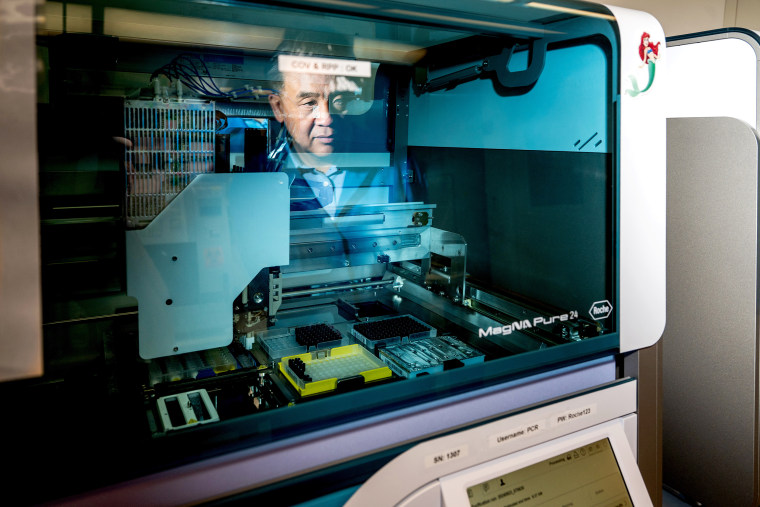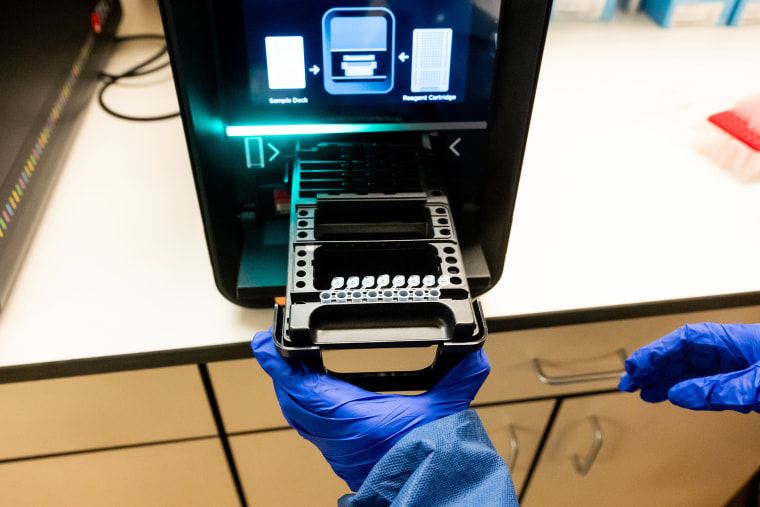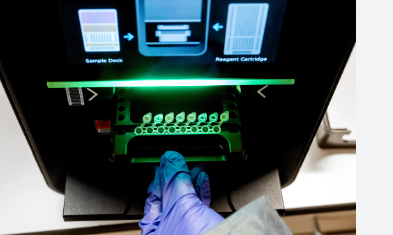According to two studies released Tuesday, a state-of-the-art diagnostic test that analyzes DNA and RNA to identify a wide range of bacteria, fungi, viruses, and parasites is assisting certain medical professionals in making diagnosis for medical problems.
Conventional diagnostic tests are often developed to assess certain chemicals, such hormones, proteins, or minute quantities of genetic information. Instead, the genomic test, which was created at the University of California, San Francisco, analyzes and sequences all of the DNA and RNA found in a sample of blood, tissue, or bodily fluid. It looks for matches between the sequences and a large database of diseases.
Since the technology is more costly and takes longer to provide findings, it cannot replace the current tests used to diagnosis common ailments like strep throat or COVID. However, it shows promise in a specific situation: when a patient is hospitalized with severe symptoms but the results of first tests are negative and the physicians are unable to determine the cause of the problem.

According to one of the new investigations, which was published on Tuesday in the journal Nature Medicine, the test has already shown successful in determining the source of neurological diseases such meningitis and encephalitis (swelling of the brain or its surrounding membranes). Out of almost 4,800 spinal fluid samples collected at UCSF over around seven years, it was able to diagnose 86% of the neurological illnesses it came across.
The test was able to connect transplant recipients’ encephalitis diagnoses to their organ donor’s yellow fever in 2021 and 2022. Additionally, it assisted in identifying the source of a meningitis epidemic among surgical procedure patients in Mexico last year.
Dr. Charles Chiu, a professor of laboratory medicine and infectious diseases at UCSF and the study’s principal author, stated, “For one of the early patients who had developed symptoms, our test was used to identify the cause of it as a specific fungus, Fusarium solani.”
The test may also be used to identify new viruses, including those that have the potential to cause pandemics, according to a second research on the test that was published on Tuesday in the journal Nature Communications. In order to determine if the test might detect human viruses such as the coronavirus that causes COVID-19, even if the genetic sequences of such viruses were eliminated from the database that the test is based on, the researchers conducted a simulation.
According to Chiu, the test was still able to identify the viruses using similar strains in animals.
Although the Food and Drug Administration has not yet authorized the test, it has designated it a “breakthrough device,” allowing laboratories to use it based on its potential to benefit patients. However, the test is costly: Less than ten laboratories regularly utilize it, and it costs $3,000 to run each sample, according to Chiu.
“Historically, it has been utilized as a last-resort test, but this is mainly due to problems like the test’s expense, the fact that it is only accessible in specialized reference labs, and the fact that it is very time-consuming to conduct,” he stated.
The new study “raises the possibility that we perhaps should be considering running this test earlier” during an individual’s illness, Chiu continued.
The test was created ten years ago by Chiu and his colleagues at UCSF. Soon later, it discovered that a 14-year-old child in a medically induced coma had leptospirosis, a bacterial illness. Doctors prescribed penicillin as a result of the diagnosis, and the youngster recovered swiftly.
However, Susan Butler-Wu, an associate professor of clinical pathology at the University of Southern California, notes that the test has limitations.
According to her, the technology is probably too complex for the typical community hospital to implement anytime soon. Additionally, physicians may find it difficult to understand the data; thus, they should seek advice from a laboratory director who possesses the necessary knowledge.

Butler-Wu stated, “Until someone commercially puts it in a box with an easy button, this is just not something that a clinical lab will be doing.”
She said that because the test misses some instances, hospitals should use it in conjunction with other diagnostic procedures.
Butler-Wu stated that it is not a one-stop shop. “It can simply be useful as an extra tool.”
However, Chiu stated that he could see the test being extensively utilized in hospitals in the future to identify a variety of ailments, including the underlying causes of sepsis or pneumonia.
“Both cost reduction and turnaround time reduction are critical,” he stated.





